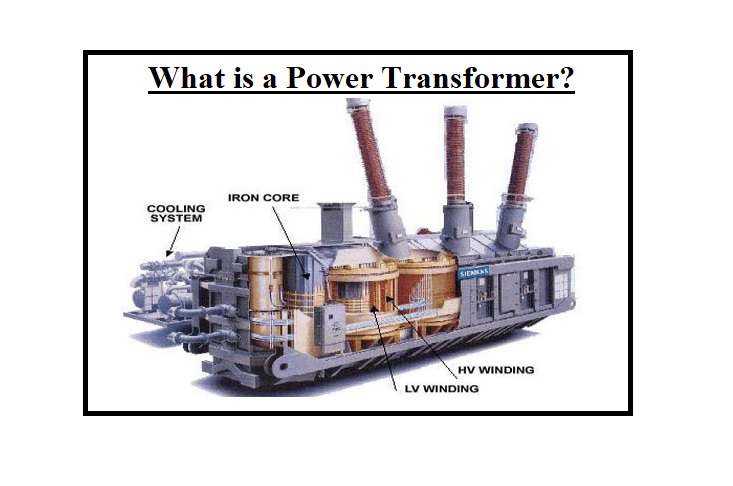What is a Power Transformer? A transformer is an electrical instrument that is employed to transmit power from one circuit to another within electromagnetic induction. The power transfer is attended without frequency variation. In an electronic network, the state power transformer is applied to present a number of AC supplies of multiple voltages and suitable values of current from the public electricity support, and also employed to represent the transformers with a 500KVA range or greater.
Find all the information you need about power transformers on Linquip’s website. Linquip’s power transformers experts are standing by to assist you with any questions you may have. Start by reading Linquip’s article entitled, “What Is Power Transformer?“.
Register as a Linquip Transformer Expert if you wish to use all of the features offered by Linquip. How does Guest Posting on Linquip sound to you? You can submit your content as a guest on Linquip.
⇒ View a List of Transformers for Sale and Their Suppliers ⇐
What is a Power Transformer?
The Power transformer is one type of transformer that is used to transmit electrical energy in any component of the electronic or electrical circuit between the distribution primary circuits and the generator. These transformers are utilized in distribution networks to interface step down and step up voltages. The usual form of power transformer is fluid immersed, and the life cycle of these instruments is approximately 30 years. Power transformers can be divided into three types according to the ranges. They are large power transformers, medium power transformers, and small power transformers.
- The range of large power transformers can be from 100MVA and beyond
- The range of medium power transformers can be from -100MVA
- The range of low power transformers can be from 500-7500kVA
These transformers transmit the voltage. It keeps a low voltage, a high current circuit at one section of the transformer, and on the other side of the transformer, it keeps a high-voltage low current circuit. A Power transformer works based on the principle of Faraday’s induction law. It explains the power network into areas where every gear attached to the system is designed per the rates set by the power transformer.
Power Transformer Definition
A power transformer is a static device used for transforming power from one circuit to another without varying the frequency. This is a very simple definition of a transformer. Because there is no moving or rotating component, so a transformer is introduced as a static device. Power transformers perform based on an AC supply. A transformer operates on the rules of mutual induction.
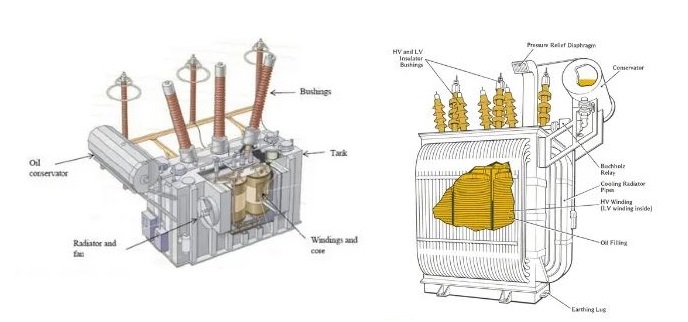
History of Power Transformers
If we want to discuss the history of transformers, we should go back to the 1880s. The property of induction was found around 50 years before that in 1830, and this is the operating basis of a transformer. Later the transformer modeling was developed, resulting in lesser size and more efficiency. The large potential of transformers in the level of several KVA, MVA came into existence gradually.
A 400KV electrical power transformer was invented in a high voltage electrical network in the year 1950. A unit rating as great as 1100 MVA was generated in the early 1970s. Several constructors manufactured 800KV and even greater KV class transformers in the year 1980.
Power Transformer Design
The structure of the power transformer is modeled with metal that is covered by sheets. It is fixed into either a shell type or core type. The structures of the transformer are wound and attached, employing conductors to produce three 1-phase or one 3-phase transformer. Aurogra http://www.pharmacynewbritain.com/aurogra/
Three 1-phase transformers need each bank isolated from the extra parts and thus provide continuity of service once one bank flops. A single 3-phase transformer, whether the core or shell type, will not perform even with one bank out of service. The 3-phase transformer is cost-effective to produce, and it has a lower footprint and operates comparatively with higher efficiency.
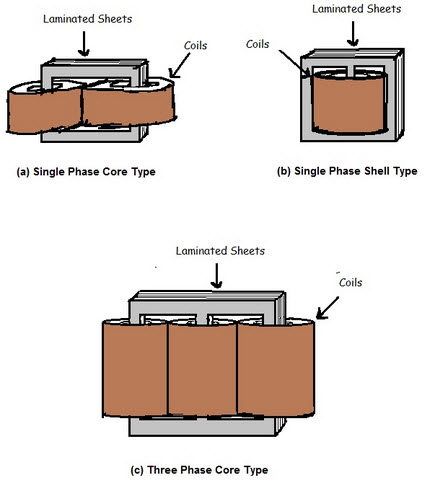
The structure of the transformer is enveloped in a fire retardant particular fluid inside a tank. The conservatory on top of the liquid tank allows for the increasing oil to cover it completely. The charger of the load drains to the side of the tank varies the no of turns on the low current-high voltage section for superior voltage adjustment.
The bushings of the tank allow for parts to precisely enter and exit the system without damaging the outer shell. The power transformer can be operated beyond its low rating as long as it stays within the 65ºC increase of the temperature. Transformers are built-in with special fans that cool the center of the transformer for operating on the above standard operation to a point below the certified temperature.
Power Loss in Transmission Lines
There are several reasons for employing a power transformer in electrical power networks. But one of the most essential reasons for using this device is to decrease power losses during electric transmission applications. Now let’s explore how power wastes are considerably reduced by employing a power transformer:
First, the equation of Power waste is
P = {I}^{2} R
Here I is the current across the conductor, and R is the resistance of the part.
So, power waste is directly related to the square of the current moving across the conductor or transmission line. So, the lower the magnitude of current flowing within the conductor, the lesser the power wastes. How we will take advantage of this phenomenon is discussed below:
Take initial voltage is 100V, load draw is 5A, and power delivered is 500watt. Then transmission systems here should carry a current of magnitude 5A from the supply to load. But if we step up the voltage at the first section to 1000V, then transmission systems only should carry 0.5A to deliver the identical power of 500Watt. Xanax without prescription http://sellersvillepharmacy.com/xanax.php
So, we will step up the voltage at the primary stage of the transmission system using a power transformer and employ another power transformer to step down the output at the end of the transmission network. With this configuration, the magnitude of current moving across the +100Kilometer transmission system is decreased considerably, thereby dropping the power waste during transmission.
Difference between Power Transformer and Distribution Transformer
The power transformer is commonly performed in full load since it is modeled to have high efficiency at 100% load. Otherwise, the distribution transformer has high efficiency once the load stays between 50% and 70%. So, distribution transformers are not desirable to operate at 100% load constantly.
Because power transformers lead to large voltages during step-down and step-up, the windings have great insulation when compared with distribution types or instrument transformers. Since they apply high-level insulation, they are very massive in size and are also too heavy.
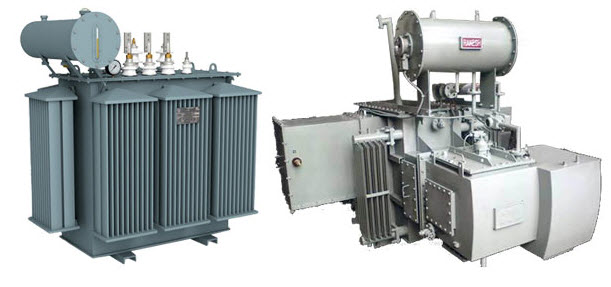
Since power transformers are typically not connected to homes straightly, they experience little load fluctuations, while on the other hand, distribution types experience heavy load variations.
These are entirely loaded for 24 hours a day, so iron and copper wastes take place all over the day. The flux density in the power transformer is also greater than the distribution type.
Power Transformer Working Principle
Power transformer operates on the principle of “Faraday’s induction law”. It is the main rule of electromagnetism that clarifies the working principle of motors, inductors, generators, and electrical transformers.
The law indicates, “Once a closed-loop or shorted component brought near a fluctuating magnetic field, then the current flowing is produced in that closed-loop”. In order to describe the law better, let us explain it in more detail. First, let’s consider the schema below.
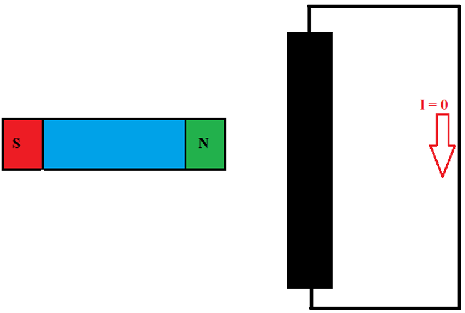
Consider a conductor and a permanent magnet are brought near to each other initially. Then the conductor is short-circuited at both sections employing a wire as presented in the figure.
In this case, there will be no current flowing through the conductor or the loop since the magnetic field cutting the loop is constant, and as stated in the law, just a varying magnetic field can force current in the network. So, in the first step of the constant magnetic field, there will be zero moving in the loop or conductor.
Now consider if the magnet is sliding back and forth, such as a pendulum, then the magnetic field cutting the conductor resumes variations. Because there is a modifying magnetic field available in this step, Faraday’s law will result in, and thereby we can see a current moving in the loop.
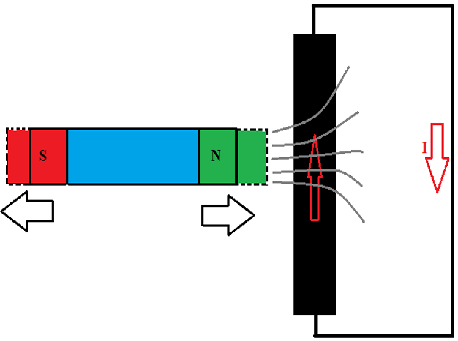
As presented in the figure, after the magnet slides forth and back, we can see the current “I” moving across the closed-loop and the conductor. Now let us eliminate the permanent battery to recover it with other modifying magnetic field sources such as below.
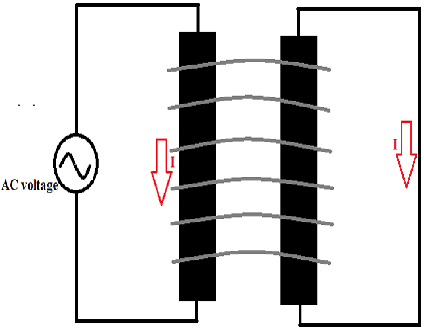
Now an Alternating voltage supply and a conductor are employed to produce a varying magnetic field.
After the loop is brought close to the magnetic field range, then an EMF generated through the conductor can be seen. Due to this stimulated EMF, we can have a current flow “I”.
The magnitude of the stimulated voltage is related to the field strength experienced by the secondary loop, so the greater the magnetic field strength, the larger the current flowing in the closed-loop.
Although it is feasible to apply a simple conductor configuration to know Faraday’s law, for more practical operation, using a coil on both sections is preferred.
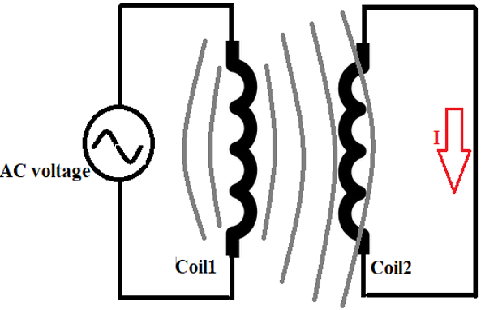
Here, an alternating current moves across the first primary coil that produces the modifying magnetic field near the conductor coils. And when the second coil enters in the rating of the magnetic field produced by the first coil, then an EMF is created across the second coil due to Faraday’s induction law. And due to the produced voltage in the second coil, a current “I” flows within the secondary closed network.
Now we should remember that both coils are hanging in the air, so the medium of conduction applied by the magnetic environment is air. The air has greater resistance in comparison with metals in the case of magnetic field conditions, so if we employ a ferrite or metal core to perform as a medium for electromagnetic network, then we can obtain an electromagnetic induction more appropriately.
So, now let us substitute the air surrounding with the iron gap for further development.
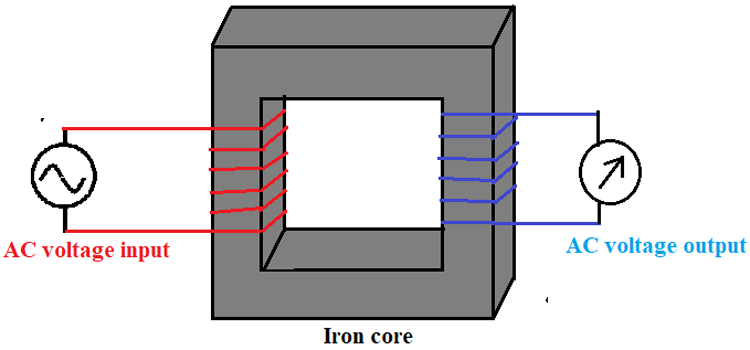
As presented in the figure, we can apply a ferrite or iron core to drop the magnetic flux waste during energy transmission from one coil to another one. During this time, the magnetic flux wasted into the atmosphere will be noticeably less than the time we employed air medium as a gap is an appropriate conductor of the magnetic field.
While the field is produced by the first coil, it will move across the iron core, reaching the second coil, and due to Faraday’s law, the second coil produces an EMF, which will be detected by the galvanometer connected through the second coil. Now, if we explore precisely, we will discover this configuration similar to a single-phase transformer. And yes, every device present today operates on the same principle. Visit here to know the fundamental of a power transformer completely.
Use of Power Transformers
- The generation of electrical energy in the low-voltage rating is too cost-effective. This low-voltage rating power can theoretically be transferred into the receiving section. This low-voltage power, if transferred, causes a greater current in lines which indeed results in more line wastes.
- But if the voltage rate of the power is improved, the current of the power is decreased, which results in a reduction in ohmic or I2R wastes in the network, reduction in the cross-sectional side of the loop i.e. reduction in the total cost of the network, and it also enhances the voltage adjustment of the system. Because of this, low-rating power should be stepped up for effective electrical power applications.
- This is performed by the step-up device at the sending section of the power network. As this large voltage power may not be distributed to the users directly, this should be stepped down to the suitable rate at the receiving side with the help of a step-down device. As a result, electrical power transformers play an important role in power transmission cases.
- Two winding transformers are typically employed where the level of high voltage and low voltage is higher than 2. It is cost-effective to apply an autotransformer where the level between high voltage and low voltage is fewer than 2.
- Again, a simple three-phase transformer unit is more efficient than a bank of three single-phase devices in a three-phase network. But a simple three-phase set is a bit problematic to use and should be stopped from working completely if one of the phase sections breaks down.
Types of Power Transformer
Transformers can be classified in several methods, based on their purpose, application, production, etc. Consider that these classifications occasionally overlap – e.g. a transformer can be both a three-phase form and a step-up form at the same time. For more explanation, some of the important electrical engineering books discuss the operation of a transformer in more detail.
The types of transformers include the following:
Step-Up Transformer and Step-Down Transformer
- Step-up transformers transform the low-voltage (LV) and high-current input from the primary section of the transformer to the high-voltage (HV) and low current value on the secondary section of the device.
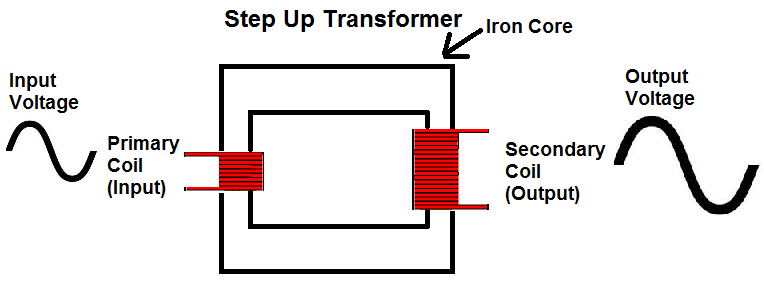
- Step down types transform the high voltage (HV) and low current value from the primary section of the device to the low voltage (LV) and high current output on the secondary section of the type.
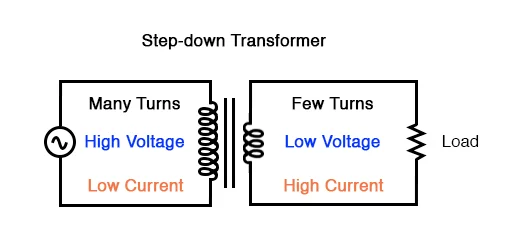
Three-Phase Transformer and Single-Phase Transformer
A three-phase transformer is typically employed in a three-phase power network as it is more efficient than single-phase types. But when size imports, it is recommended to employ a bank of three single-phase vs. a three-phase transformer, as it is simpler to transmit than one single three-phase set.
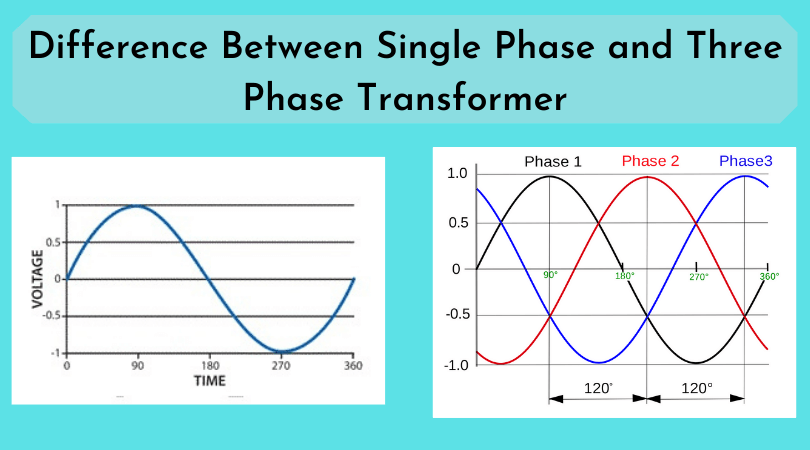
Electrical Transformer, Distribution Transformer, and Instrument Transformer
- Electrical transformers are typically employed in transmission applications for stepping down or up the voltage rating. It performs mostly during peak or high loads and has maximum efficiency at or near the entire load.
- Distribution transformers step down the output for distribution cases to commercial or domestic consumers. It has appropriate voltage regulation and performs 24 hours a day with maximum efficiency at 50% of a complete load.
- Instrument transformers contain both current transformer and power transformer, which are employed to drop high voltages and current to lesser outputs which can be controlled by conventional devices.
Two-Winding Transformer and Autotransformer
A two-winding transformer is especially used where the difference between the low voltage and high voltage side is higher than 2. It is more efficient for an autotransformer in conditions where the ratio between the different sides is less than 2.
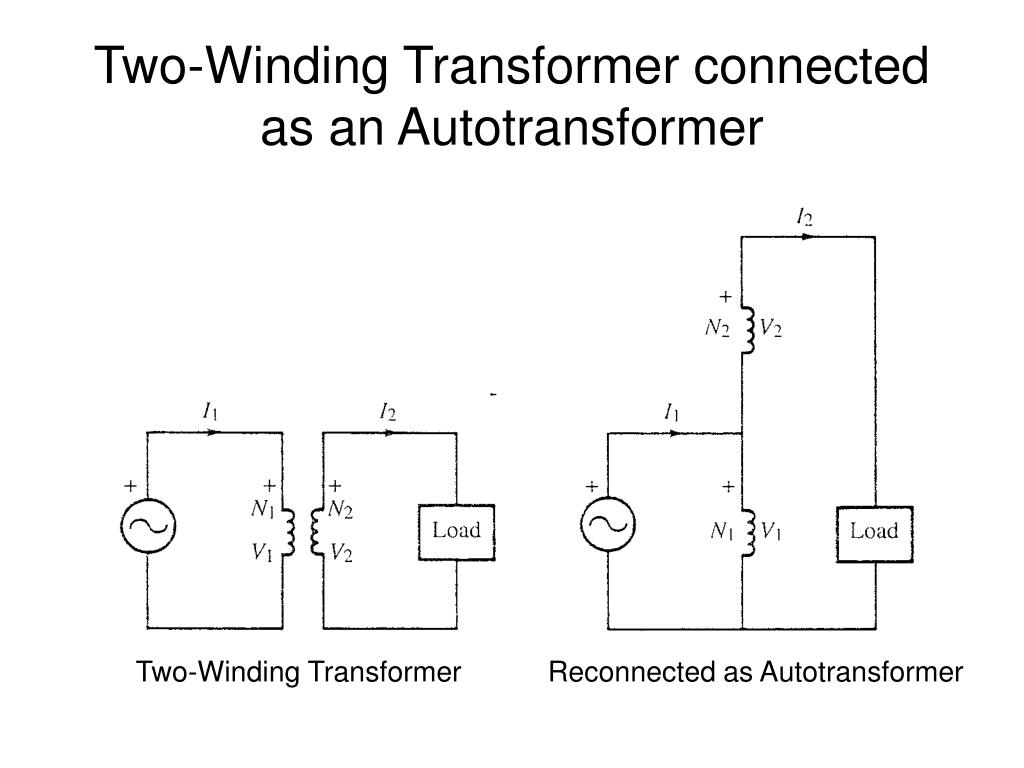
Outdoor Transformer and Indoor Transformers
As the name presents, outdoor types are designed for installing outdoors. While indoor forms are constructed for setting indoors.
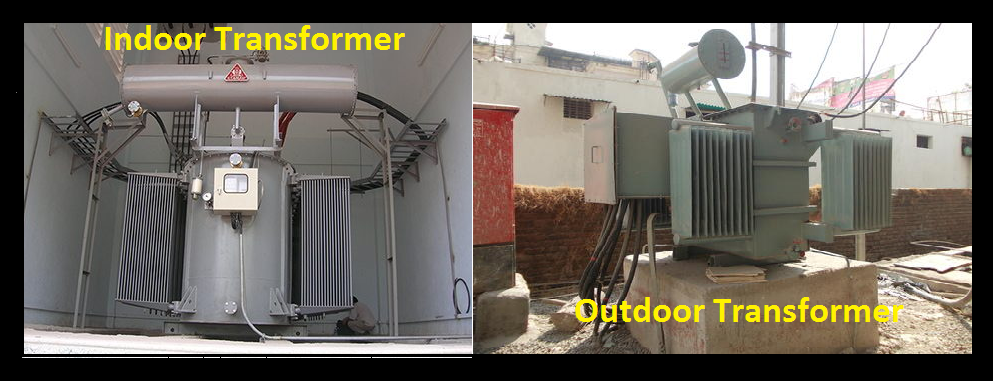
Oil Cooled and Dry Type Transformer
This type is related to the transformer cooling configuration used within the transformer. In oil-cooled types, the cooling method is transformer oil. While in the dry types, air cooling is applied instead.
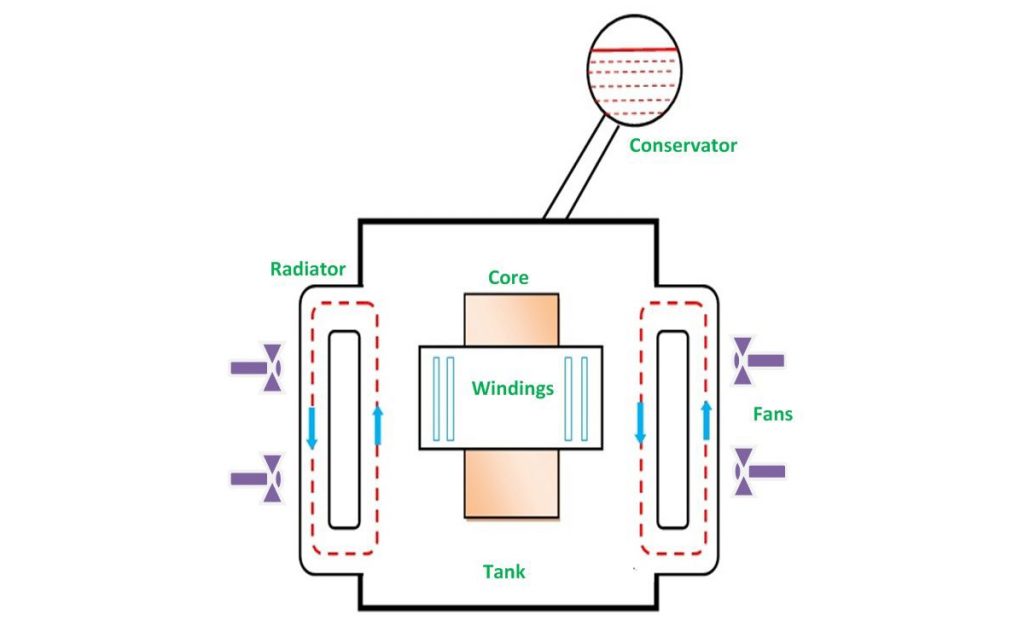
Types of Power Transformer Based on Windings
There are two main types of windings in power transformers, Shell and core types. There are also berry-type transformers constructed in particular applications.
Core Type Transformer
A core type transformer has two vertical limbs or legs with two horizontal sides introduced as a yoke. The core shape is rectangular with a typical magnetic circuit. Cylindrical coils (HV and LV) are installed on both legs.
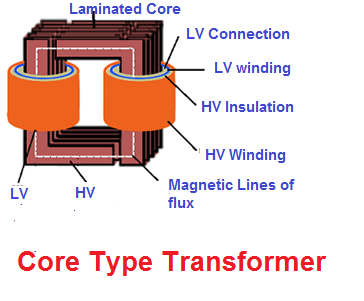
Shell Type Transformer
A shell-type transformer includes two outer limbs and one central limb. Both HV and LV coils are installed in the central section. The double magnetic circuit is available.
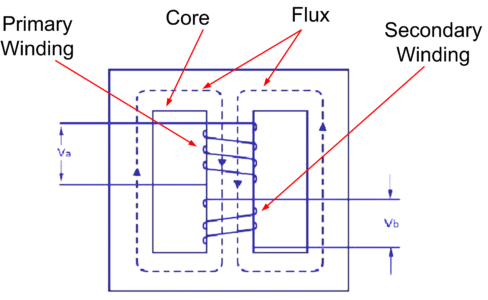
Berry Type Transformer
The core looks like the spokes of a wheel in a berry-type transformer. Metal sheet tanks are tightly fitted and employed for housing of transformer, with oil filled inside the transformer.
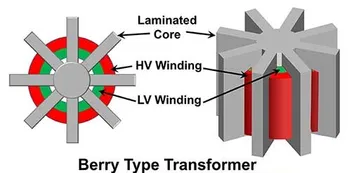
Power Transformer Specifications
Power transformers can be modeled as either a three-phase or a single-phase design. There are several important specifications to explore when searching for a power transformer. The specifications of a power transformer contain the maximum power rating, maximum voltage rating, maximum secondary current rating, and o/p type. Power transformer specifications mostly consist of:
- The primary Voltage is 22.9 kV
- Secondary Voltage is 6.6/3.3 kV
- Frequency if 60Hz,50Hz
- Phase is 3Ø
- Vector Dd0, Dyn11, etc.
- Tap Voltage 23.9-R22.9-21.9-20.9-19.9kV
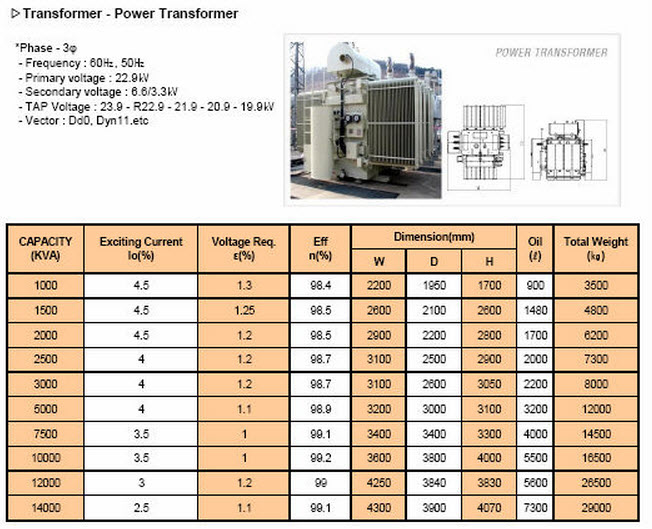
Power Transformer Applications
Power transformers can be used from one voltage type to another at high power ratings. These transformers are employed in various electronic networks and also present in various types and applications.
The applications of the power transformer contain the transmission and distribution of electrical energy. These instruments are broadly used by industrial plants, power plants, and traditional electric utility companies.
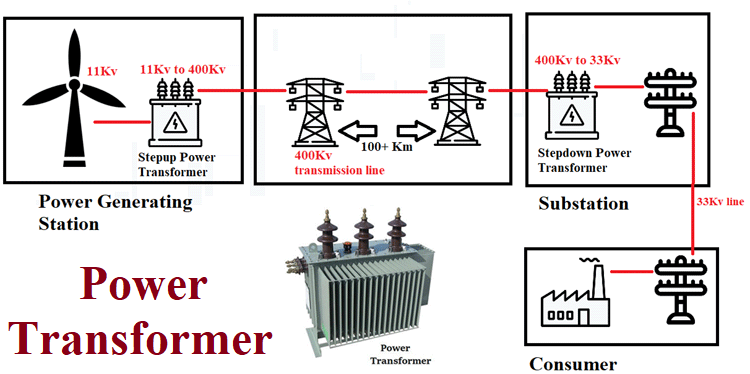
Power transformers are applied in the high-voltage transmission lines to step down and step up the voltage. These transformers are typically used for the transmission purpose of heavy loads.
These instruments are massive in size compared to the distribution types that are employed in generating stations and transmission networks. Power transformers are used in the transmission networks, so they are not employed directly for the consumers. So, the load variations of them are less.
These devices are used as a step-up system for transmission so that the I2R waste can be decreased to a determined power flow.
Power transformers are mostly used in electric power production and at distribution stations.
They are also used in isolation systems, six pulse and twelve Pulse rectifier transformers, earthing transformers, wind farm transformers, solar PV farm transformers, and autotransformer starters.
Some other applications of a power transformer include:
- Reducing power wastes during electric power transmission
- High voltage step-down and high voltage step-up
- During long-distance consumer applications
- In cases where load runs at full capacity 24×7
Summary
Power transformers are generally constructed to use the core part for maximum and will perform very much near to the apex of the B-H curve (Magnetic Hysteresis Loop). This takes down the mass of the core exceedingly. Typically, power transformers have the corresponding copper and iron wastes at a larger load.
As a result, this is all about a power transformer working principle, specifications, and applications. We hope that you have got more understanding about them. In addition, any queries regarding this subject or power transformer definition, please give your feedback by commenting in the comment section below.
Download PDF for What is Power Transformer
This article is available for download as a PDF file so you can refer to it whenever you need to.
Buy Equipment or Ask for a Service
By using Linquip RFQ Service, you can expect to receive quotations from various suppliers across multiple industries and regions.
Click Here to Request a Quotation From Suppliers and Service Providers
Read More on Linquip
- What is Potential Transformer?
- Types of Transformer: An Article About How Transformers Differ in Construction and Design
- What is the Current Transformer?
- Difference between Power Transformer and Distribution Transformer
- What Is Auto Transformer
- What Is Electrical Transformer
- What is the Efficiency of Transformer?
- What is Step-Down Transformer and Its Application?
- Difference Between Step-Up and Step-Down Transformer: A Quick Guide

